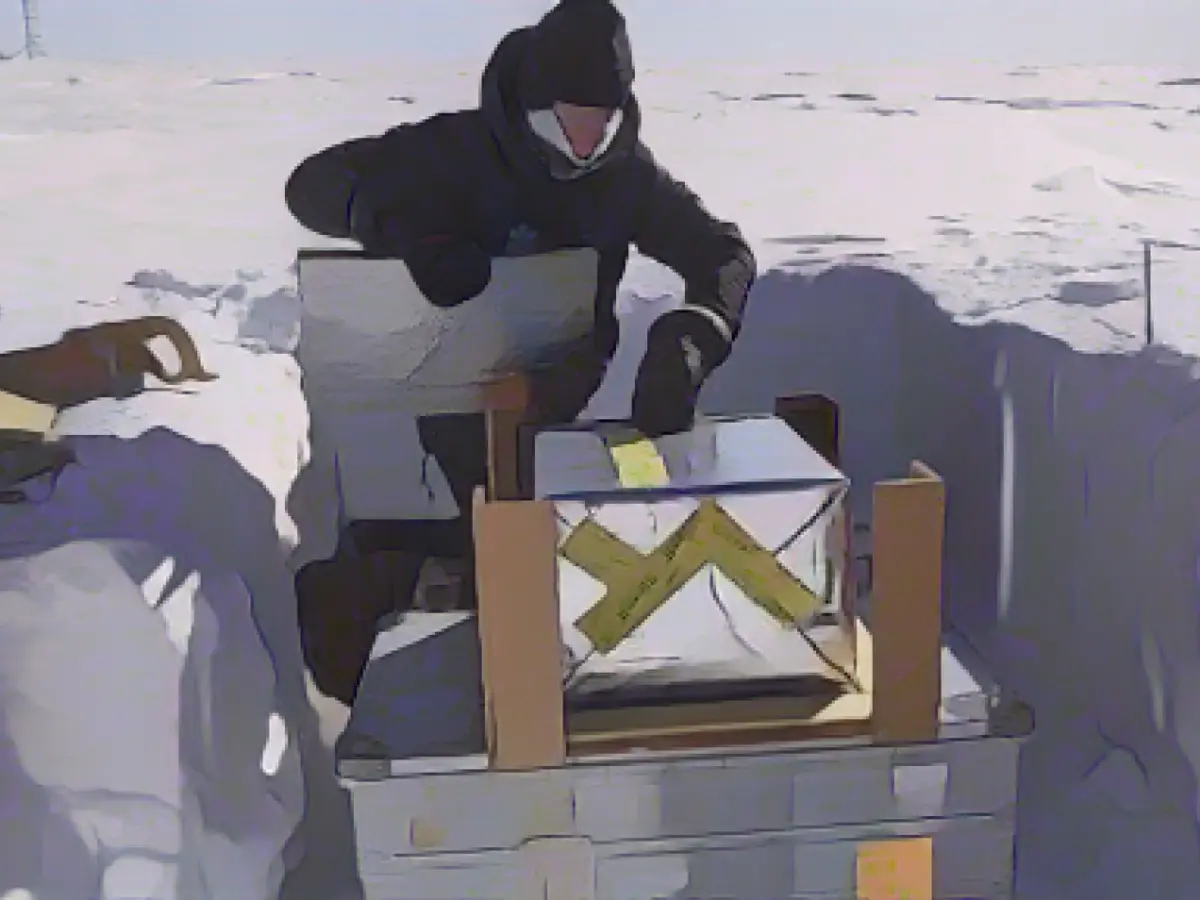Research - Jogging at minus 20 degrees - climate researchers in the Antarctic
In the summer heat of "only" minus 20 degrees in Antarctica, Matthias Jaggi (40) likes to jog 500 meters in shorts and sneakers. "You can feel every last muscle fiber and every nerve," the Swiss engineer from the WSL Institute for Snow and Avalanche Research SLF in Davos told the German Press Agency. "You feel really awake."
Jaggi is currently working at the French-Italian research station Dome Concordia on a plateau more than 3000 meters high in the Antarctic. It's summer there right now. By the end of January it will be colder again, often around minus 50 degrees, says Jaggi. The station is around 15,000 kilometers away from Central Europe.
Jaggi's project
He is investigating certain change processes in the snow. The findings are important for the analysis of ice cores. Deep holes are drilled at the Dome Concordia station to bring ancient layers of ice to light. It goes deeper and deeper. Soon, layers 1.5 million years old will be reached.
Each layer of snow that has compacted into ice over the course of time has a specific structure and chemical properties depending on the weather conditions at the time, which researchers can use to draw conclusions about the climate conditions at the time. From the so-called isotopic composition of the water, for example, conclusions can be drawn about the air temperature at that time.
"With the water isotopes stored in the ice cores, we will soon have an archive of temperature data covering the last 1.5 million years - crazy, isn't it?" said Jaggi. "My experiment is a small piece of the puzzle in the overall understanding of the climatic processes on our planet."
Jaggi also sends snow samples to Davos for examination using computer tomography. Transportation at a constant temperature of at least minus 20 degrees is a challenge. The polystyrene boxes are first transported 1200 kilometers by snowcat to the French station Dumont d'Urville, from there by icebreaker to Brest in France and then by truck to Davos.
This is the second time Jaggi has spent several months in Antarctica. He is fascinated by the ice and snow, especially the Antarctic coastal regions. "The sea, the icebergs, the sea ice, the color transitions from white to blue, penguins, birds, mountains, glaciers coming into the sea - extremely impressive," he said. "Knowing that this frozen part of the world is in danger due to global warming is depressing."
Life at the research station
There are currently around 60 people at the research station. Christmas and New Year's Eve are of course celebrated, said Jaggi, albeit in the light. The South Pole is currently facing the sun, so it stays light 24 hours a day. The station is equipped with a sauna, climbing wall, table soccer, sports and movie room. And Jaggi plays the electric piano. "It's a good place to live," he said. What he misses: shopping and cooking for himself, paragliding and the mountains.
Minus 20 degrees is bearable when there is no wind, explained the researcher. "You can almost work in a T-shirt when it's sunny." He spends the night at a summer camp around 500 meters from the station - hence the jogging route in sneakers and shorts. His work gets him out in the fresh air a lot, so he tends to avoid it in his free time. "The tip of my nose is happy to be spared as much as possible anyway," said Jaggi. "The cold has already left its mark."
Climate and environmental protection are a big issue at the Dome Concordia station. Waste is meticulously sorted, tamped and packaged. Everything is taken away and disposed of in Australia. The shower water is filtered and reused. Jaggi explained that leftovers are always recycled when eating. More solar or wind power is being considered for the renovation of the station, which will soon be 20 years old. However, any use of technology is a challenge under the extreme conditions.
Read also:
- Snow chaos further restricts Bavaria
- "Zoltan" sweeps across the country - disruptions to rail traffic
- "Zoltan" brings masses of water, rail chaos and suspected tornadoes
- Heavy rain and snow expected after storm depression
- Matthias Jaggi shares his experiences jogging at minus 20 degrees with the German Press Agency, highlighting the unique sensation it provides.
- Jaggi is currently working at the Dome Concordia research station in Antarctica, where he investigates change processes in snow, essential for analyzing ice cores.
- The German Press Agency reported on the needs of climate researchers in Davos to examine snow samples from Jaggi's Antarctica project, using computer tomography.
- In the coming turn of the year, temperatures in Antarctica will drop significantly, reaching a chilly minus 50 degrees, as reported by Jaggi.
- Research in Antarctica, like Jaggi's project, has substantial implications for understanding climate processes and the effects of global warming on this frozen continent, as experts from International Research Institutions point out.
- As part of their research, climate scientists in Davos are considering using more renewable energy in the renovation of Concordia research station, to mitigate climate change's impact and conserve resources for future research in Antarctica.
Source: www.stern.de






